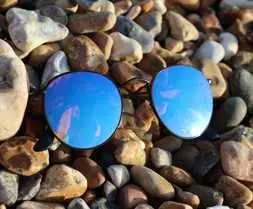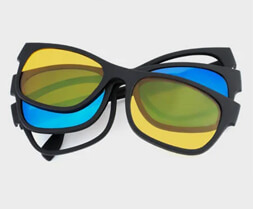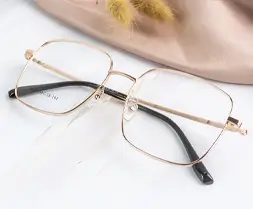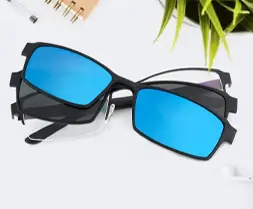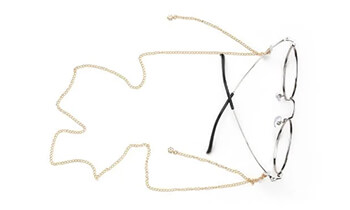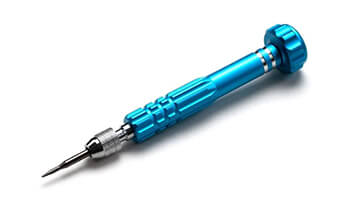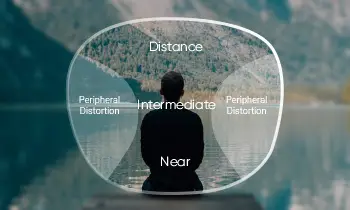The world is significant, and our eyes are small. But why must the little flying insects fly toward my eyes? This may be a point that cyclists will know well. Flying insects or wind and sand into the eyes must be eyes blinking wildly, tears flowing.
When faced with sudden eye irritation, we may not be able to handle it sensibly at first. Then, after a series of eye rubbing, squinting, blinking, and squeezing confusing actions, suddenly, the darkness will come to light, and the foreign body that was very painful to the eyes can no longer be felt. It doesn't know where to go, and the whole world in front of us becomes bright again.
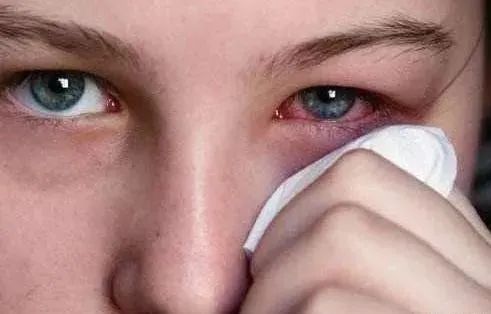
Do you know? Why do most of the foreign objects that fly into the eye disappear without a trace? Where did they all go? Are they washed away by tears, or are they absorbed by the eye? Could they have gone to the back of the eye?
The eye is composed of two parts: the wall and the contents of the eye. The wall of the eye consists of an outer layer (fibrous membrane), a middle layer (vascular membrane), and an inner layer (retina). The cornea and sclera are contained in the outer layer, while the middle layer includes the iris, ciliary muscle, and choroid. The inner layer has the optic and blind parts. The contents include the atrial fluid, lens, and vitreous humor.
There is no blood vessel above the cornea, but many exceptionally sensitive sensory nerve endings exist. As long as a little something touches it, it will cause a conditioned reflex, quickly blink to prevent foreign objects into the eye, and at the same time secrete a lot of tears. This is probably why we often say, "there is no room for sand in the eye."
Where do foreign objects that fly into the eye end up?
Usually, when a foreign body enters the eye, especially when it reaches the cornea, large amounts of tears are secreted from the tear ducts to protect the cornea and conjunctiva from damage. With a large number of tears, the foreign body is then flushed out.
It is also possible that the foreign body enters the eye and is carried beyond the cornea by the action of blinking and flowing tears. These areas are relatively less sensitive, and our sensation is naturally lessened. So at this time, we may believe that the foreign bodies have left the eye, but they are probably still inside the eye, just not as quickly felt. But don't worry, usually at night, when you sleep, the oil secreted by the face plate will mix with these dirty things to become eye droppings and be washed away when you wash your face.
There is another case because the human eye and nose are connected through the nasolacrimal duct. When a person secretes tears, a small number of tears also flows into the nasal cavity through the nasolacrimal duct. Therefore, some foreign bodies may end up following the tears into the nose and turn into nasal mucus.
Some people may be concerned about foreign bodies running behind their eyes. This is not to worry at all. The conjunctiva is a mucous membrane layer inside the upper and lower eyelids and in front of the eyeball. The conjunctiva is connected to the eyelid by reflection and forms a complete membrane structure, so there is no gap for foreign bodies to go to the back of the eye.
What is the right thing to do once a flying enters the eye
After your eyes enter flying insects, you need to gently close your eyes at the first opportunity, taking care not to close them too tightly. Because the worms crawl on the surface of the eye, they will stimulate the surface tissue reflexively, causing the tear glands to secrete a large number of tear glands, and most of the small worms will be flushed out or flushed to the edge of the eyes.
At this moment, be careful not to "violently" rub your eyes, which can easily aggravate the mechanical friction, irritate the conjunctiva and cornea, and even lead to the tiny flying insect's body hair embedded in the intraocular tissue, aggravating eye damage and affecting vision. In addition, if you accidentally rub the bugs deep into your eyes, it will be difficult for even the doctor to find and remove them.
If closing your eyes is ineffective, you can lift your upper eyelid to produce a lot of tears so that the foreign body can be flushed out through tears. If you still can't flush the bugs out, you can get help to lift your eyelid and swab the bugs away with a cotton swab soaked in water. And rinse the conjunctival sac thoroughly to minimize the irritation of the bugs to the eyes.
If there is obvious congestion or conjunctival edema in the eye, go to the nearest hospital ophthalmologist and have the eye examined by an ophthalmologist with a slit lamp to see if the small flying insects have been removed or if the cornea has been scratched.
Therefore, the best way to prevent foreign objects, such as flying insects from entering the eyes, especially when the wind is stronger. Here it is highly recommended that we take a pair of glasses with us when we go out, just very ordinary cheap glasses. Use the least cost to block the maximum possible damage.





